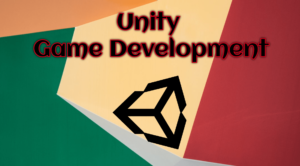Unity is a powerful game development platform that allows developers to create 2D and 3D games for a wide range of platforms, including PC, consoles, mobile devices, and virtual reality devices. However, to make the most out of Unity, it’s essential to integrate it with other tools and platforms that can enhance your game development experience. In this comprehensive guide, we’ll explore how to Unity Integration with other popular tools and platforms, from game engines to virtual reality devices and mobile platforms.
Contents
How can I use Unity Integration with other game engines?
Unity supports integration with several popular game engines, including Unreal Engine, CryEngine, and Godot Engine. To integrate Unity with another game engine, you’ll need to use a middleware tool that acts as a bridge between the two engines. For example, the UniVRM tool allows Unity to import 3D models created with VRoid Studio and export them to other game engines. Alternatively, you can use a custom script that converts assets from one engine to another.
How To Use Unity Integration with virtual reality devices?
Unity is one of the most popular platforms for developing virtual reality (VR) games. To integrate Unity with VR devices such as Oculus Rift, HTC Vive, or Windows Mixed Reality, you’ll need to install the appropriate SDK for your device. For example, to develop for Oculus Rift, you’ll need to download and install the Oculus Integration package from the Unity Asset Store. Once installed, you can use the VR features of Unity to create immersive VR experiences.
How To Unity Integration with mobile platforms?
Unity supports integration with a wide range of mobile platforms, including iOS, Android, and Windows Phone. To develop these platforms, you’ll need to install the appropriate SDKs and plugins for Unity. For example, to develop for iOS, you’ll need to install Xcode and the iOS SDK, as well as the Unity iOS plugin. You can then use Unity to create mobile games with features such as touch controls, accelerometer support, and more.
How can I integrate Unity with other tools and platforms?
Unity also supports integration with a wide range of other tools and platforms, such as 3D modeling software, animation software, and physics engines. To integrate Unity with these tools, you’ll need to use a middleware tool or plugin that acts as a bridge between the two platforms. For example, the ProBuilder plugin allows Unity to create and edit 3D models directly within the Unity editor, while the Havok Physics plugin allows Unity to use the Havok physics engine for advanced physics simulations.
Conclusion:
integrating Unity with other tools and platforms can greatly enhance your game development experience and enable you to create more immersive and engaging games. From game engines to VR devices and mobile platforms, Unity supports integration with a wide range of tools and platforms. By following the steps outlined in this guide, you can easily integrate Unity with the tools and platforms you need to create your dream game.

